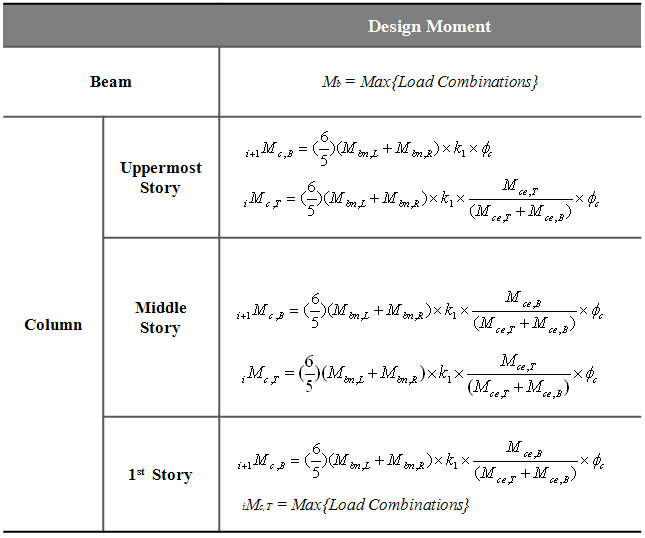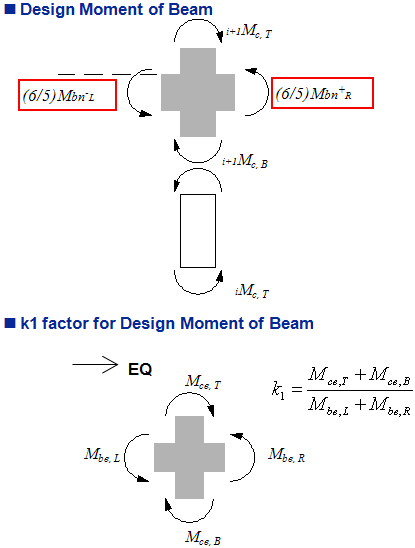Design Code
| ||||||||||||||||||||||||||||
|
| ||||||||||||||||||||||||||||
|
| ||||||||||||||||||||||||||||
|
Determine the design code and the special provisions for seismic design (if required) to perform the design or the strength verification for RC members. | ||||||||||||||||||||||||||||
|
| ||||||||||||||||||||||||||||
|
| ||||||||||||||||||||||||||||
|
| ||||||||||||||||||||||||||||
|
From the Main Menu select Design > Concrete Design Parameter > Design Code
From the Menu tab of the Tree Menu select Design > Concrete Design Parameter > Design Code | ||||||||||||||||||||||||||||
|
| ||||||||||||||||||||||||||||
|
| ||||||||||||||||||||||||||||
|
The following dialog box is used to enter the data:
[When Eurocode2:04 is selected]
Design Code
RC design code (refer to Note 1)
National Annex
National Annex for Eurocode2:04.
Apply Special Provisions for Seismic Design
Option to apply the capacity design rule as per EN1998-1:2004
Note. How to calculate design forces of capacity design as per EN1998-1:2004
Strut Angle for Shear Resistance
The angle between the concrete compression strut and the beam axis perpendicular to the shear force
Slenderness Limit
Apply NTC2008
Option to apply the capacity design rule as per NTC2008
Note. How to calculate design forces of capacity design as per NTC2008
Strong Column Weak Beam
Define the ratio to satisfy the ductility condition at all the joints. Default value is '1.3'.
eq. (4.9) in EN1998-1:2004
Select Ductility Class
For EC8:04
DCH: High ductility level
DCM: Medium ductility level
For NTC2008
CD "A": High ductility level
CD "B": Medium ductility level
Shear Force for Design (Gamma_rd)
Define the factor accounting for possible overstrength due to steel strain hardening
Default value is as follows:
Secondary Seismic Element
Define the secondary seismic elements in order to preclude the capacity design rule
Friction Coefficient for Wall Sliding
Define the concrete-to-concrete friction coefficient under cyclic actions, which may be assumed equal to 0.6 for smooth interfaces and to 0.7 for rough ones. The default value is 0.7.
Structure Information
Structure Type: Define structure type to calculate behavior factor and determine the wall design method
Behavior Factor (q): Behavior factor to account for energy dissipation capacity shall be derived for each design direction as follows:
Calculate by Program: Behavior factor is automatically calculated and applied to the capacity design.
Alpha u / Alpha 1: The multiplication factor for buildings which are regular in plan.
User Input: Behavior factor is directly entered by the user.
Note. Behavior factor for horizontal seismic actions
Where, qo : Basic value of the behaviour factor for systems regular in elevation
Alpha u / Alpha 1: The following approximate values may be used:
kw: The factor reflecting the prevailing failure mode in structural systems with walls
Elastic Response Spectrum
Default By Function: Select response spectrum function defined in Response Spectrum Function. The spectrums of 'Eurocode8' and 'User Type' are available.
Spectrum Parameters
Soil Factor (S)
Tb: The lower limit of the period of the constant spectral acceleration branch
Tc : The upper limit of the period of the constant spectral acceleration branch
Td: The value defining the beginning of the constant displacement response range of the spectrum
Ref. Reak Ground Acc. (AgR): The design ground acceleration on type A ground
Importance Factor (I)
Viscous Damping Ratio (xi)
[When ACI318-05 is selected]
Concrete Design Code dialog box
Design Code
RC design code (refer to Note 1)
Apply Special Provisions for Seismic Design
Option to apply the special provisions for seismic design
Select Frame Type
Apply different Scale up Factor for Shear for each seismic zone (This is applicable for ACI318-89, 95, 99, 02,05).
Special Moment Frames: Moment frame in strong-motion seismic zone
Intermediate Moment Frames: Moment frame in intermediate-motion seismic zone
Ordinary Moment Frames: Moment frame in weak-motion seismic zone
Shear for Design
Apply Scale up Factor for Shear as per special provisions for seismic design.
R*Vc(a1*SUM(Mpr)/L>max(Ve1,Ve2)/2) R: ACI318-05 Clause 21.3.4.2 indicates that " Transverse reinforcement shall be proportioned to resist shear assuming Vc=o when ...". In midas, even though such conditions occur, the user can include a part of shear strength of concrete as well as shear reinforcement. Method: Select a method to apply Scale up Factor for Shear. Max(Ve1, Ve2): Use the larger of the shear forces to which Scale up Factors for Shear (a1, a2) will have been applied. Min(Ve 1, Ve 2): Use the lesser of the shear forces to which Scale up Factors for Shear (a1, a2) will have been applied. Ve 1: Select to apply Scale up Factor for Shear (a1). Ve 2: Select to apply Scale up Factor for Shear (a2).
[When TWN-USD100 is selected]
Apply Special Provision for Seismic Design
Option to apply the special provision for seismic design.
Shear for Design
Apply Scale up Factor for Shear as per special provisions for seismic design.
R*Vc(a1*SUM(Mpr)/L>max(Ve1,Ve2)/2) R: ACI318-05 Clause 21.3.4.2 indicates that " Transverse reinforcement shall be proportioned to resist shear assuming Vc=o when ...". In midas, even though such conditions occur, the user can include a part of shear strength of concrete as well as shear reinforcement. Method: Select a method to apply Scale up Factor for Shear. Max(Ve1, Ve2): Use the larger of the shear forces to which Scale up Factors for Shear (a1, a2) will have been applied. Min(Ve 1, Ve 2): Use the lesser of the shear forces to which Scale up Factors for Shear (a1, a2) will have been applied. Ve 1: Select to apply Scale up Factor for Shear (a1). Ve 2: Select to apply Scale up Factor for Shear (a2).
SCWB Design/Checking Method
Option for design force calculation special provision for seismic design.
Design Strength:
Perform strong column-weak beam design and checking using the design strength
of beams (
[Ductile Design & Checking calculation]
Design > RC Strong Column Weak Beam Design > Ductile Design...
Concrete Code Design > Beam Design, Column Design...
Concrete Code Check > Beam Checking, Column Checking...
[Strong Column Weak Beam Ratio Calculation]
Design > RC Strong Column Weak Beam Design > Strong Column Weak Beam Ratio...
Design > RC Strong Column Weak Beam Design > Strong Column Weak Beam Ratio Table...
Nominal Strength:
Perform strong column-weak beam design and checking using the nominal
strength of beams (
[Ductile Design & Checking calculation]
Design > RC Strong Column Weak Beam Design > Ductile Design...
Concrete Code Design > Beam Design, Column Design...
Concrete Code Check > Beam Checking, Column Checking...
[Strong Column Weak Beam Ratio Calculation]
Design > RC Strong Column Weak Beam Design > Strong Column Weak Beam Ratio...
Design > RC Strong Column Weak Beam Design > Strong Column Weak Beam Ratio Table...
Torsion Design
Apply torsional design based on Taiwanese Concrete Design Code clause 4.7. This option is applicable for TWN-USD92 only.
Note 1 If the user omits the design code, the Concrete Structure Design Code of the European Standard (Eurocode2:04) is applied by default. Available RC design codes are as follows:
- EN 1992-1-1:1994 Eurocode2, Design of concrete structures Part 1 (Eurocode2:04)
- ENV 1992-1-1:1992 Eurocode2, Design of concrete structures Part 1 (Eurocode2)
- Ultimate Strength Design, the American Concrete Institute (ACI318-05/02/99/95/89)
- Canadian Standards Association of Concrete Structures (CSA-A23.3-94)
- British Standard, Structural use of concrete Part 1 (BS8110-97)
(available upon request)
- Taiwan (TWN-USD10)
- Indian Standard (IS456:2000)
- China Standard (GB50010-02)
- Architectural Institute of Japan (AIJ-WSD99)
- Architectural Institute of Korea (AIK-USD94)
- Korean Society of Civil Engineers (KSCE-USD96)
- Korean Concrete Institute (KCI-USD99)
- Architectural Institute of Korea (AIK-WSD2K)
| ||||||||||||||||||||||||||||
|
|
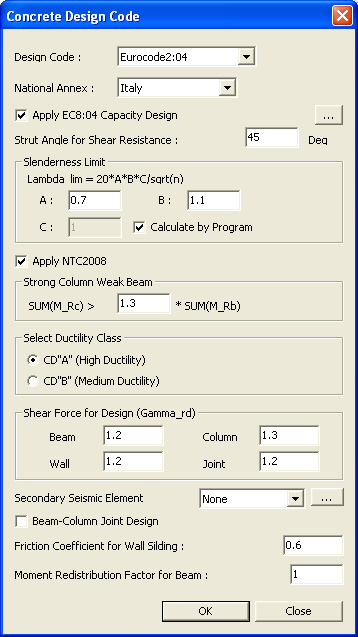
.jpg)
 Revision of Gen 2010
Revision of Gen 2010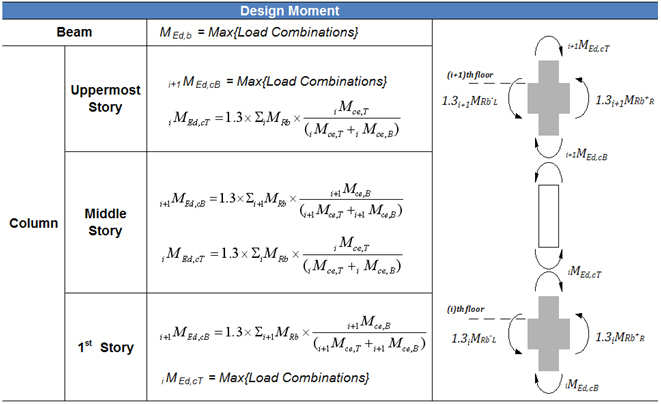
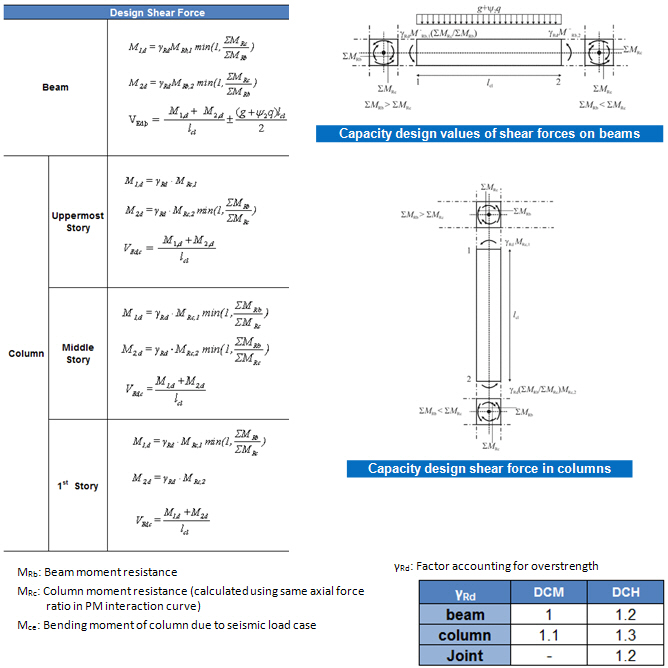
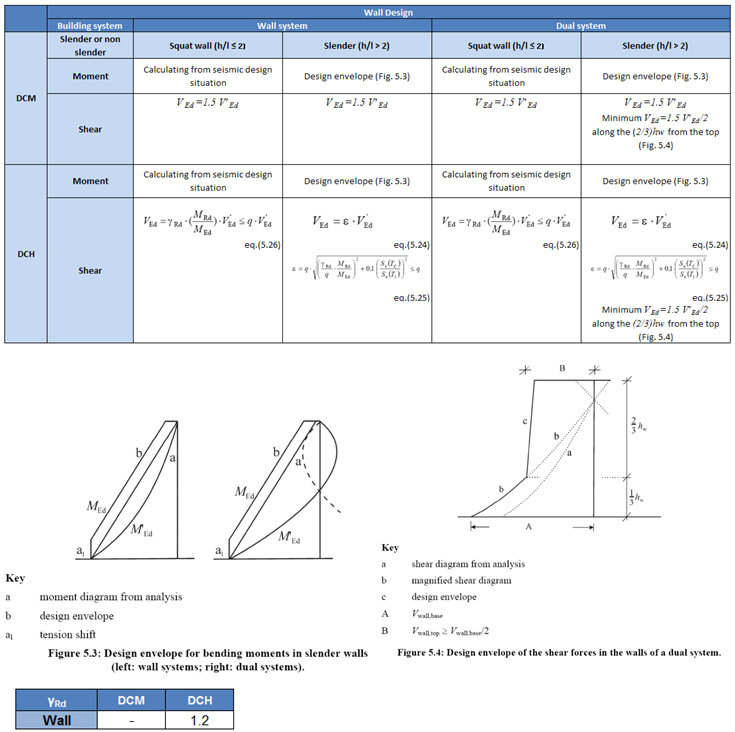
 (5.13N)
in EN1992-1-1:2004
(5.13N)
in EN1992-1-1:2004 (Default value is '0.7'.)
(Default value is '0.7'.) (Default value is '1.1'.)
(Default value is '1.1'.) (Default setting is 'Calculate
by Program'.)
(Default setting is 'Calculate
by Program'.)

 eq.(5.1)
in EN1998-1:2004
eq.(5.1)
in EN1998-1:2004



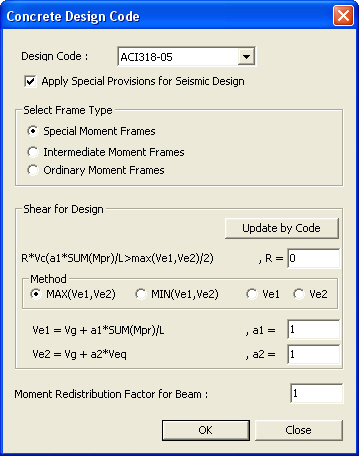
 : Enter the selection
and close the dialog box.
: Enter the selection
and close the dialog box. : Do not enter the selection
and close the dialog box.
: Do not enter the selection
and close the dialog box. : Apply Scale up Factor for
Shear as per a relevant code.
: Apply Scale up Factor for
Shear as per a relevant code..jpg)
 ).
). 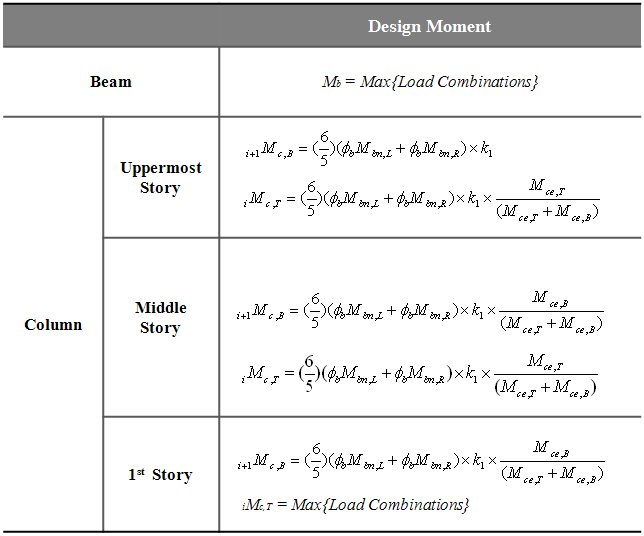
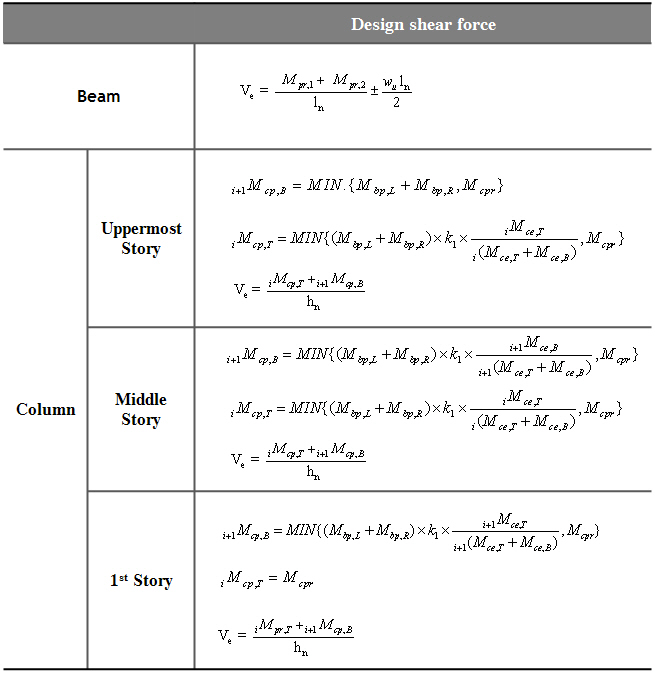
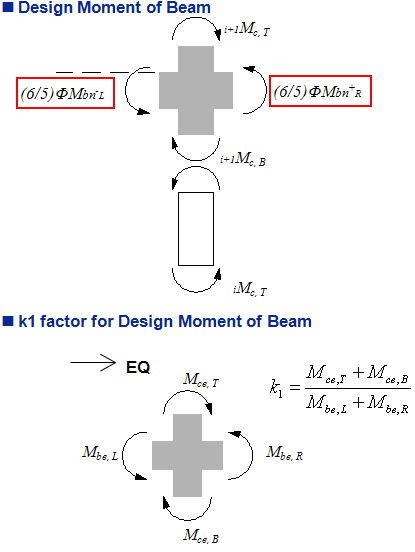
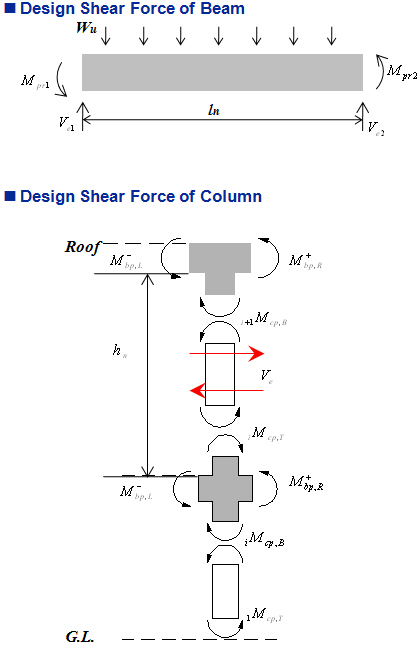

 ).
). 